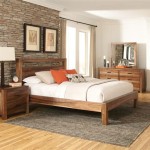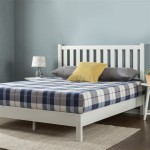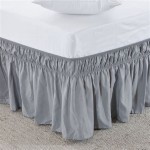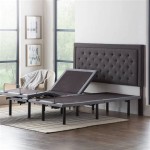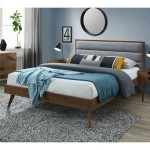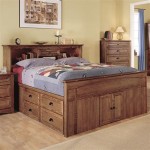DIY Canopy for Bedroom
A bedroom canopy can transform a sleeping space into a cozy retreat, adding a touch of elegance and romance. Constructing a DIY canopy offers a personalized touch and allows for customization to suit individual preferences and existing décor. Several methods offer varying complexities and aesthetics, all achievable with readily available materials.
Utilizing an Embroidery Hoop
This method proves to be an economical and straightforward approach, ideal for smaller spaces or those seeking a minimalistic touch. An embroidery hoop, fabric, ribbon or twine, and a hook comprise the primary materials. The size of the hoop dictates the canopy's diameter, offering flexibility for different bed sizes. The chosen fabric should be lightweight and draped easily, with sheer materials creating an airy feel while opaque fabrics offer more privacy.
Begin by securing the fabric to the embroidery hoop, ensuring even tension. Ribbon or twine, tied to the hoop at four equidistant points, provides the suspension mechanism. These strands are then gathered and tied to a hook securely fastened to the ceiling directly above the bed's center. Customization can be achieved through embellishments like lace, ribbons, or fairy lights added to the fabric or hoop.
Creating a Corner Canopy
A corner canopy presents a space-saving solution, particularly suitable for smaller bedrooms or those desiring a more intimate feel. This design requires a curtain rod, brackets, fabric, and optional tiebacks. The length of the curtain rod defines the canopy's span, and brackets mounted in the corner of the room offer support. Fabric selection should consider the desired ambiance, with lighter fabrics contributing to a more open feel, while heavier fabrics enhance a sense of enclosure.
Begin by mounting the brackets in the desired corner, ensuring they can securely hold the rod and fabric's weight. Hang the curtain rod and drape the chosen fabric over it, allowing it to cascade down the walls and over the bed. Tiebacks can be employed to manage the fabric's flow and create a visually appealing drape. This method is particularly adaptable, allowing for easy changes in fabric or tiebacks to refresh the room's aesthetic.
Constructing a Frame Canopy
Building a framed canopy offers the most structured and versatile option, allowing for greater control over size and shape. Materials include wooden dowels or PVC pipes for the frame, connectors appropriate for the chosen frame material, fabric, and screws or hooks for ceiling attachment. Preliminary measurements should be taken to determine the desired frame dimensions, ensuring it aligns with the bed size and ceiling height.
Construction begins with assembling the frame, connecting the dowels or pipes with appropriate connectors. The frame design can range from a simple rectangle to a more elaborate curved or peaked structure. Once the frame is complete, the chosen fabric is draped over it and secured with staples, glue, or ties. The frame is then suspended from the ceiling using screws or hooks, positioned centrally above the bed. This method offers significant customization potential, allowing for variations in frame shape, fabric choice, and embellishments.
Choosing the Right Fabric
Fabric selection plays a crucial role in the overall aesthetic and functionality of the canopy. Consider the desired level of light filtration, privacy, and overall ambiance. Lightweight, sheer fabrics like chiffon or voile create an airy and romantic feel, allowing light to filter through while offering some privacy. Heavier fabrics like linen or velvet provide more privacy and light blockage, creating a cozy and intimate atmosphere. The fabric's color and pattern should complement existing décor and contribute to the desired mood.
Safety Considerations
Regardless of the chosen method, ensuring the canopy's secure installation is paramount. Utilize appropriate anchors and hardware for ceiling attachment, and verify the weight capacity of the chosen materials. Regularly inspect the canopy for any signs of wear or damage, particularly in areas subjected to stress. Keep the canopy clear of any potential fire hazards, such as candles or heating elements. For canopies intended for children's rooms, avoid using excessively long or loose fabric that could pose a safety risk.
Maintenance and Cleaning
Maintaining the canopy's appearance involves regular cleaning and care. Fabric canopies should be laundered according to the manufacturer's instructions, paying attention to specific cleaning requirements for delicate materials. Frames should be dusted regularly and inspected for any damage or loose connections. Promptly address any necessary repairs to maintain the canopy's structural integrity and prevent potential safety hazards.

14 Diy Canopies You Need To Make For Your Bedroom

House Home Diy No Sew Canopy Bed

25 Diy Canopy Beds To Make You Feel Like Re On Safari

Diy Canopy How To Make A Bed Easiest Way Geetika Arya

20 Magical Diy Bed Canopy Ideas Will Make You Sleep Romantic

7 Diy Canopy Beds Bed Bedroom

Make An Inexpensive Diy Bed Canopy Our Peaceful Planet

Easy Canopy Crafts Diy Bed
Diy Children S Canopy Bed Remodelista

Diy Canopy Beds Bring Magic To Your Home
Related Posts
